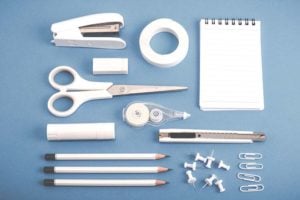Deep in the jungles of Southeast Asia …
Rambo comes face to face with an Indochinese Tiger. A vicious battle ensues, with Rambo finally strangling the beast with his bare hands. Afterwards, he notices a long deep gash in his shoulder. Using some old fishing line and a tooth he has pulled from the tiger (the tiger drew “first blood” after all), he sutures his own wound sitting on the floor of that steamy jungle.
I know what you’re thinking, “That wasn’t part of the Army recruiting video!”
In fact, this sort of movie cliché underscores several misconceptions regarding routine wound care. The first—and biggest—error is to think there is something magical and essential about a sutured closure. In reality, the most important aspect of treating most wounds is cleaning them out. Rambo would have been much wiser to thoroughly wash his wound and leave it open. In most cases, wounds actually will heal very nicely if left open. In the case of a dirty animal bite in the jungle, I would have washed it out and actually not sutured it closed. Suturing a wound increases the risk of infection. If you hit your head on the corner of a wall, the risk of infection is low and suturing is appropriate, but a dog bite to the foot, for example, should be left to heal on its own.
Folks often make the mistake of thinking that pouring disinfectant into a wound is a good idea, but this is not correct. All manner of antiseptics from Bactine to rubbing alcohol to whiskey have been poured into wounds to “kill” bacteria. Unfortunately, these things are not that good at killing bugs. What you really want is to thoroughly wash out a wound with water under some pressure. There is an old adage in medicine that you should not put anything into a wound that you wouldn’t put into your own eye. In the office, we use a syringe and spray a firm stream of sterile salt water into wounds. At home, I run slightly warm tap water full bore into a wound to clean it. It is this vigorous irrigation that washes out not only bacteria, but all manner of dirt and other particulate matter that sits in the wound. It is often this other material that forms a hiding place for bacteria and allows them to get a foothold and cause infection.
One of the reasons why sutured wounds are at higher, not lower, risk of infection is that the suture material itself is a foreign body sitting in the wound. In one series of experiments, it was determined that just a few staph bacteria sitting on a piece of suture would cause a wound infection, whereas many more of these bacteria poured into an open wound did not result in infection.

Well why, then, should we sew up a wound? One answer is cosmetic. A laceration on the face will likely heal with a smaller scar if we sew it closed. We realize the folly, now, of Rambo sewing his own wound. In his case, the better cosmetic outcome is to have a larger, not a smaller, scar. However, wounds on the body probably heal faster if we sew them closed. Although your body has a built-in mechanism to shrink down and contract an open wound, it works more slowly than sewing it up.
Patients often feel that plastic surgeons have some magic dust that they sprinkle on wounds and this results in smaller scars. The outcome from a wound is very subjective. If a patient looks at himself or herself in the mirror and sees a scar repaired by a plastic surgeon at a cost of $500 per stitch, the patient is likely to think, “Wow, look at my tiny scar. I’m so glad I insisted on having a plastic surgeon do the repair.” On the other hand, if God forbid some cowboy ER doc sews them up, then even staring at an identical scar, they will think, “Such a huge scar! Why didn’t I get a plastic surgeon?!”
In my twelve years in emergency medicine, I had plastic surgeons come in to do repairs on many occasions. For the vast majority of the types of routine lacerations I would see in the ER, the plastic surgeons did not necessarily do a better job than an ER doc. Often it came down to who was more careful and patient. Once in a while, the plastic surgeons’ work was not as good, usually because they trimmed away too much healthy tissue and did more work than is ideal at an initial closure. Where plastic surgeons are invaluable is in wound revision. It can take 12 months to see the final scar result from a laceration, but when the outcome is not satisfactory to the patient, plastic surgeons are experts at wound revision. They are also experts at face lifts, and I intend to avail myself of that expertise when the time comes.
I often tell patients that I’d be willing to take credit for all the good scar outcomes and even the blame for the bad outcomes if I could. But the fact is that your own body and the nature of the wound determine most of what a scar will look like. The skill of the person doing the repair makes up only a small percentage of the final outcome.
Wounds and lacerations flatten as they heal,
so we like to start out with the wound
standing a bit above the skin surface.
Nowadays, we have a number of new methods for closing lacerations, and many have advantages over traditional sutures. Surgical staples are very popular. Since they are made of stainless steel, they are less likely to cause allergic reactions. Also, staples help lift up the cut edge of the wound. Wounds flatten as they heal, so we like to start out with the wound standing a bit above the skin surface. Another popular approach is surgical glue. Glue is good if the wound is not under a lot of tension (i.e., not tending to pop back open). The glue we use is very similar to Super Glue that you buy at the drugstore, but it is a lot more expensive. In fact, I’ve never known Super Glue from Walgreens to actually glue anything together other than human skin, which it does exceedingly well. Surgical tape can also be used to close wounds, and tape can be applied after sutures are removed to give some extra support to the wound edge. If you’re in the jungle and really feel you need to close your own wound, I’d recommend using Scotch tape or Super Glue after an extremely thorough washing out. For one thing, they hurt less to apply without anesthesia.
When staples or sutures are used, they need to be removed. Sometimes, we place sutures deep in the wound. As you might expect, the presence of these deep sutures does increase the risk of infection somewhat. However, by pulling the wound together, they can improve the final scar. To help reduce scarring, we need to use a material that is very slowly absorbed by the body for deep sutures. If the body eats up the deep suture in a week, it has not stayed in place long enough to let the surrounding wound heal. Sometimes, weeks or months after a wound repair or a surgery, you might note this deep suture material poking out through the skin. Don’t be alarmed. If you pull on it, you won’t unravel. The suture has been in there all along, doing its important job of lessening the tension on the wound and reducing the chances of scarring. Leaving surface sutures in too long can actually increase scarring because white dots develop at the site of suture entrance and exit from the wound, and along the path where the suture lies.
So my advice to patients who find themselves with a typical laceration is to seek care in my office or in the ER, but if you find yourself in the jungles of Viet Nam, then thoroughly wash out the wound with plenty of water and keep it covered. There is no need for D.I.Y. sutured closures; they only increase the risk of infection. Topical antibiotics are worthwhile after careful cleaning.


